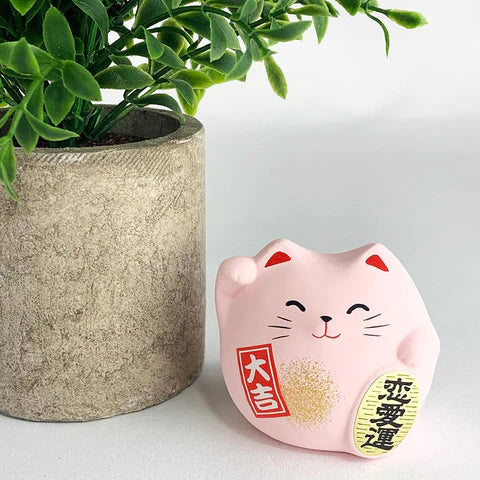If you go anywhere in urban Japan or consume Japanese media, you may have noticed the frequency in which cats (猫, neko) appear. From cat-human hybrid characters to cat-themed decor, feline influence can be found almost anywhere in Japan. In the US, “pet culture” is alive and well too - particularly thanks to the recent rise of social media and popularization of pet-based accounts that put pets in the spotlight - but it still isn’t quite as pervasive and embedded in pop culture here as it is in Japan. So where did the Japanese obsession with cats come from?

1. Cats are a Recurring Character in Japanese Folklore and Culture
Japan’s love for cats actually dates back much farther than you may think! Being one of the oldest countries in the world (founded in 660 BC), Japan has had centuries to build a rich and eclectic collection of folklore, mythology, literature, and art. Across all of these mediums, there is one type of creature that appears regularly: the yokai (妖怪).
Yokai is the broad term used to describe any supernatural being in Japanese folklore, from ghosts, to monsters, to fairies, yokai are not necessarily all good nor evil, they are simply defined as “supernatural”. Among the multitude of yokai and stories about them, there are an abundance of catlike yokai. Two of the most influential among these are the bakeneko and the iconic maneki neko.
- Bakeneko (化け猫, monster cat)
The bakeneko is an enigmatic character in Japanese folklore and isn’t confined to one specific description. Generally, they are evil cats with magical powers such as shape-shifting, ability to speak, and necromancy (reanimating and communicating with the dead). Some stories claim that a bakeneko is made when a regular cat simply grows older and larger than a cat normally could, or if their tail grows too long. Other legends state that they are created when a cat is killed by a human and comes back from the dead to curse the person who harmed them.
Tales of these evil cats date back centuries and helped to cement cats in Japanese folklore as beings who should be cautiously respected, and highlight how Japan has always viewed cats as mysterious creatures that possess unusual abilities.
- Maneki neko (招き猫, beckoning cat)
Unlike the wicked bakeneko cat, the maneki neko is a symbol of good luck and fortune in Japan and possesses a much more lighthearted backstory. According to legend, sometime in the 17th century, a wealthy samurai was out hunting near the dilapidated Gotokuji Temple, which was home to a poor monk and his Japanese Bobtail cat. Suddenly, a violent storm blew in and the man sought shelter under a large tree, where he noticed a cat waving one paw at him from the steps of the temple. Curious, he approached the cat, and, just as he did so, a bolt of lightning struck the tree he had been seeking cover under. Believing the cat to have saved his life, the samurai purchased the temple and restored it for the cat and its owner to express his gratitude. Upon the cat's passing, he built a statue on the temple grounds to honor it.
Since then, the temple and image of the Japanese waving cat have become associated with good luck and fortune. It is common to see maneki neko statues in both Western and Japanese businesses and homes as a token of wealth and prosperity (and a cute piece of decor to greet guests!) Visit our blog to learn more about the story of the maneki neko.
In modern times, the emergence of kawaii culture in Japan has played a key role in popularizing the love of cats and pets in general. Small, fluffy animals that rely on their owners for love and affection appeal greatly to this subculture that focuses on anything “cute”.
Wildly popular Japanese franchises such as Pokémon and Hello Kitty have also helped to further integrate cats into popular culture. While Hello Kitty fits kawaii culture perfectly - and is arguably one of key originators of it - Pokémon makes a deeper connection to Japanese culture by taking lots of inspiration from the aforementioned cat yokai folklore, and includes many other cat-inspired designs.

(Pictured: Maneki neko statues at the Gotokuji Temple in Tokyo, Japan)
2. Ties with Buddhism
It is generally agreed upon that cats came to Japan from China aboard ships carrying Buddhist monks sometime between the 6th and 10th centuries. These monks sought to benevolently spread their teachings and Buddhism in Japan has since flourished into its own branch of Japanese Buddhism (Nihon Bukkyō), or Zen Buddhism, and is the second most commonly practiced religion in Japan, after Shinto.
Cats and Buddhism in Japan are not only intertwined by origin story; there has long been a bit of a symbiotic relationship between cats and Buddhist monks. Cats would live in and around Buddhist temples (like in the aforementioned story of the maneki neko) to help keep pest populations down and protect stored food and scripture, and in return the cats received food and shelter.
Cats are also viewed by Buddhist monks as mindful and spiritual beings that can help teach one about the ways of Buddhism. This is because cats are, for the most part, calm, observant, and restful creatures that have mastered all that is “zen” - qualities that a monk may spend his whole life honing.
3. Practicality
Another significant reason why cats have become such a popular pet in Japanese homes is simply out of practicality. Japan is one of the most densely populated and urbanized nations in the world, thanks to its many massive, highly populated cities. In these urban areas, apartments are the most common type of housing, with over 70% of Tokyo residents reportedly living in apartments. Averaging at under 700 square feet for an apartment (and even smaller in desirable city neighborhoods), Japanese people don't have much extra space for pets. With this in mind, cats are the perfect choice of companion. They take up much less space than a medium or large breed of dog or an animal that requires any type of enclosure, and they don’t require an outdoor space in order to receive adequate care.
Japan is also known for its demanding work culture that generally expects plenty of overtime and not utilizing all available vacation time. School days and years are longer than most Western counterparts and are similarly demanding as well. Cats, with their notoriously independent and self-sufficient attitudes, are an ideal pet option for Japanese workers and students who don’t have lots of extra time to spend socializing with and caring for an animal. Cats are relatively easy to care for, making them a suitable pet for a busy person to own. Additionally, in recent years, an increasing number of young people in Japan have chosen to opt out of, or at least delay, entering parenthood, so pet ownership has been on the rise in its place.


